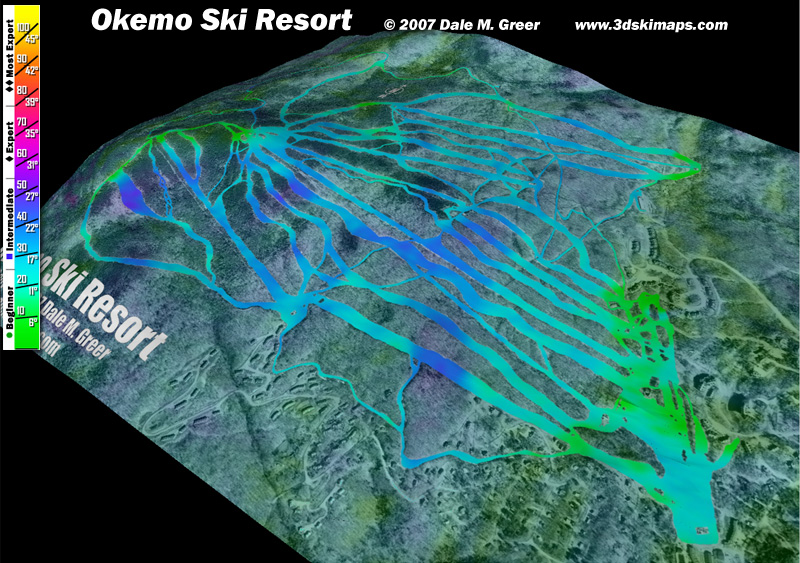Terrain quality:
Mt. Baldy blows Gore away, also Whiteface unless the Slides are open. Here's some concrete evidence if you don't believe the hometown source:
There is no eastern area, even the elite of Northern Vermont, that compares in steepness to Baldy.
But I wasn't comparing Baldy to those. The eastern sectors I was comparing, SoVt, NH, Maine, upstate NY, Quebec City, have only 2 areas, Cannon and Sugarloaf, that even belong in a conversation with Baldy in terrain quality. And how far are those from NYC or Boston metro vs. Baldy's easy daytrip distance from L.A.? I've been listening to you guys for years tell me how much more important daytrip areas are vs. those where you need to stay overnight.
rfarren":25see7iz said:
Baldy has a horrible track record of keeping the whole mountain open, often the best terrain is closed.
Chair 1's terrain is great, but it's not any better than Thunder's. Having chair 1/Eric's open increases the mostly advanced expert terrain at Baldy from 400 acres up to 800. The Slides
are Whiteface's best terrain, and they are open once in a blue moon.
rfarren":25see7iz said:
Based on percentage of terrain open they may be similar. Okemo boast 600 acres of terrain with a vertical drop of 1200 feet. Snow Summit has 200 acres at 1200 ft of vert.
I should have clarified. I have a lot of data for Snow Summit. They bought next door neighbor Bear Mt. in 2002 and upgraded the snowmaking to similar quality. Both are skiable on the same ticket but you must take a shuttle between them. Trail acreage I've seen is 240 for Summit and 200 for Bear. Bear also has ~400 acres of off-piste that as one might imagine, are seldom open (but more often than the Slides I'm sure). Everything I've ever read about Okemo is "Slowkemo," or how flat it is, or how black runs there would be blue at most places.

I am not buying that Okemo is a viable powder/tree skiing destination. I've never even read a report of a powder day there. I have no doubt that Summit/Bear combined are at least comparable to Okemo in terrain, and probably in the ballpark with Stratton, err.. Flatton (not my nickname there either), and Mt. Snow. I think Southern Vermont is in fact the closest analogy to Big Bear on all fronts. Upstate NY and NH/Maine are better for terrain but worse for conditions.
rfarren":25see7iz said:
Those regions support:
a. For the most part superior terrain
Baldy's terrain is better for experts than any area in those 4 regions. Mt. High and Big Bear would be average to below average.
I deliberately picked ~175 averages in the East to make that comparison.
c. Extensive snowmaking capabilities.
Agree, as noted below. One area in SoCal vs. many in the East.
SoCal tree skiing is far, far superior to those in the 4 regions under discussion. And worse than Northern Vermont due only to snow not topography.
E. Consistent storms, less season to season variability
The SoCal snow volatility is a positive for powder and the occasional extended spring, otherwise negative. The East's temperature volatility (read rain) can be more damaging than SoCal's precipitation volatility.
One point I will concede before someone brings it up, is that SoCal has basically 3 ski areas that are relevant to discussion. I view Waterman as 99% overshadowed by Baldy and similarly Snow Valley vs. Big Bear. Each of the 4 regions in the East I've mentioned has multiple areas, and the 4 regions themselves are quite far apart. Thus there are situations where one of the 4 regions might be good when the others are not, and having the multiple areas give skiers good options for crowd avoidance on peak days that we do not have in SoCal. Riverc0il best articulated this argument in one of the East/West threads, and I think it has much validity.
The point I am making here is that the natural attributes of the SoCal mountains are at least as good as those in the 4 eastern regions mentioned. Another point rfarren touched upon in the East's favor is that only one SoCal area has the snowmaking water resources that numerous eastern areas do. That area can put out a more consistent ski product due to altitude/climate advantages, but again it's one area vs. many in the East.




